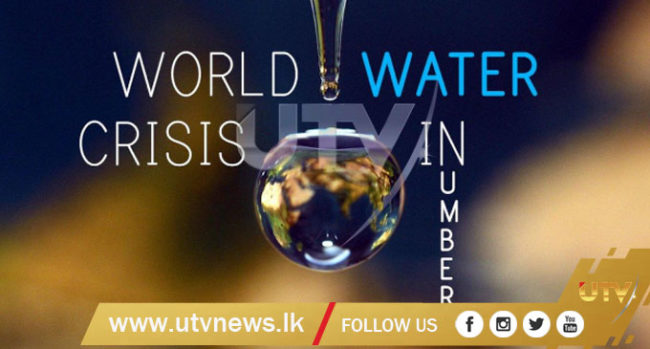UTV | COLOMBO – It’s World Water Day on March 22 and in 2018 the theme is “Nature for Water.”
“How can we reduce floods, droughts and water pollution?” asks the United Nations, which organizes World Water Day each year. “By using the solutions we already find in nature.”
“Nature-based solutions have the potential to solve many of our water challenges,” says the World Water Day website.
“We need to do so much more with ‘green’ infrastructure and harmonize it with ‘grey’ infrastructure wherever possible. Planting new forests, reconnecting rivers to floodplains, and restoring wetlands will rebalance the water cycle and improve human health and livelihoods.”
In 2015, the U.N. agreed to a set of 17 Sustainable Development Goals to be achieved by 2030 that will improve the world in which we live. Number six commits countries to ensuring access to water and sanitation for all.
“Clean, accessible water for all is an essential part of the world we want to live in,” it says.
“There is sufficient fresh water on the planet to achieve this. But due to bad economics or poor infrastructure, every year millions of people, most of them children, die from diseases associated with inadequate water supply, sanitation and hygiene.
“Water scarcity, poor water quality and inadequate sanitation negatively impact food security, livelihood choices and educational opportunities for poor families across the world. Drought afflicts some of the world’s poorest countries, worsening hunger and malnutrition.”
To Mark World Water Day 2018, Here Are Some Mind-Blowing And Alarming Facts.
According to the U.N., 2.1 billion people don’t have safe drinking water at home.
Of those, 844 million don’t have access to a basic drinking water service, including 263 million people who travel for over 30 minutes per trip to collect water.
And 159 million still drink untreated water—a serious health risk—from surface water sources, such as streams or lakes.
There are 663 million people who live without a safe water supply close to home.
About 71% of the Earth’s surface is water-covered, according to The United States Geological Survey Water Science School.
The world’s total water supply equates to 332.5 million cubic miles.
Oceans hold around 97% of all Earth’s water, which means all but about 3% of our water is saline.
Of the world’s total freshwater, 69% is frozen in ice and glaciers and another 30% is in the ground.
Just 0.26% of the world’s water is in freshwater lakes.
And only 0.001% of all our water is in the atmosphere.
By 2050, the world’s population will have grown by an estimated 2 billion people—nearing 10 billion—increasing demand for water by up to 30%, predicts the U.N.
Over 80% of society’s dirty wastewater flows back into the environment without treatment or reuse.
As much as 71% of the world’s natural wetlands have been lost since 1900—and it’s humans’ fault. (Courtesy – NW)
